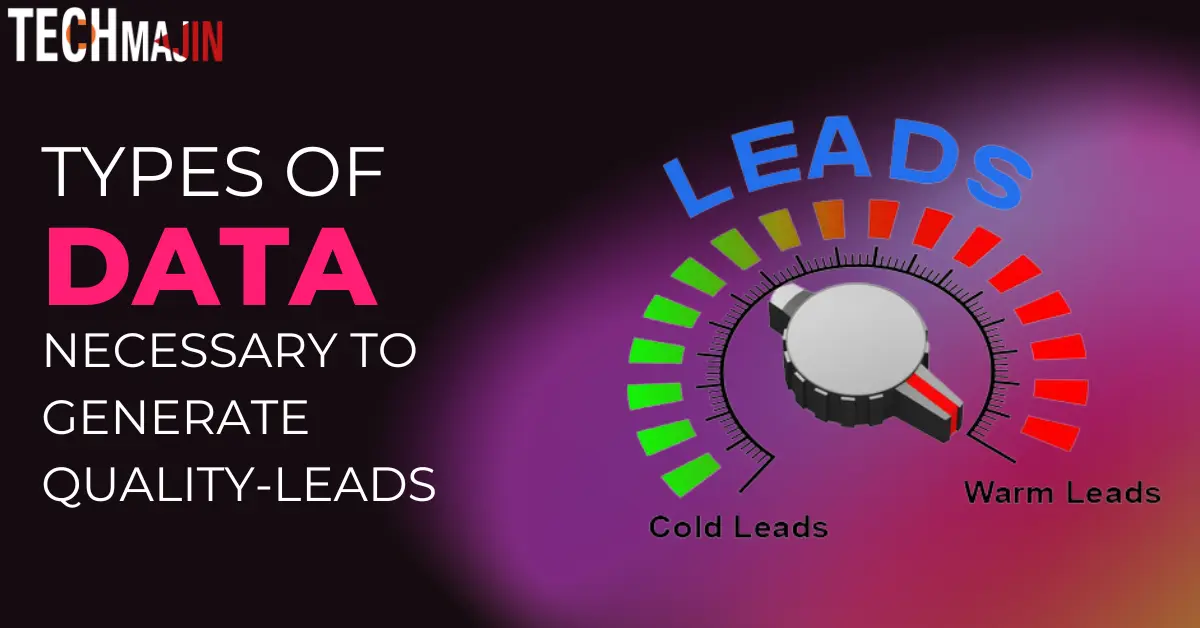Lead generation is undoubtedly a vital part of any business’s marketing plan, in fact, it’s crucial for the business to grow and develop. Lead generation doesn’t come without its own challenges, it requires collecting the right data, incorporating essential practices, and thoroughly understanding the process inside out.
Many companies nowadays turn to buying leads for recruitment, B2B deals, and sales, as it turns out to be one of the most effective solutions to funnel the business with prospects without spending all valuable time generating them. Research claims that the use of marketing automatization software can result in a substantial 451% increase in lead generation.
The definition of high-quality leads
There are many different ways to identify a lead and each industry has its own set of identifications, but something they all agree on is what a high-quality lead is. A quality lead is an ideal prospect with a high chance of conversion that you get from your lead marketing campaign. The more likely a lead is to convert the higher their quality stands.
The most essential data for high-quality lead generation
As businesses collect lead information they can get stuck with a simple phone number, which is great, but isn’t enough to produce a high-quality lead. Here is a list of some of the essential data you should look out for when generating high-quality leads:
Lead contact data
The very first thing you’ll need to communicate with a lead is any type of contact details, whether that’s an email address, social media nickname, or even better a mobile phone number. Phone numbers are usually considered advanced lead detail because of their direct reachability of a lead.
Demographic data
Collecting demographic data is important since it is what withholds the characteristics of your leads.
By analyzing their age, demographic group, gender, education level, job titles, and geographic location, you can build a picture of that specific type of individual and create an ideal marketing approach for them. In fact, 80% of consumers are more likely to purchase from a company that provides a tailored experience.
Firmographic data
As demographic data identifies individual leads, firmographic data is ideal for B2B and identifying a company. A company’s industry of specialty, size, number of employees, geographic location, revenue, and principals. Use this data to categorize organizations with the best fit for you and create individual campaigns for industries.
Technographic data
After collecting all contact details, firmographics, and demographics, you’ll need to seek any technographic data you can get for intense targeting and extremely personalized messaging.
Find out what hardware and software companies use to run their processes, their existing tech stack, and what positions they are missing. Use the knowledge to contact them with personalized problem-solving propositions and empathize with their pain points and how you can solve them.
Quantitative and Qualitative data
Quatiive data will encompass all the countable data points, which can further be used to create forecasts using numbers from any previous periods. The prospect can also be compared in a number-like form which is easier to analyze than loads of written data.
Qualitative data encompasses all word-like data, which is a great accompaniment to qualitative data. This data shows the complete picture of a customer’s behavior, identifying reasons for specific decisions.
The key tips for generating more quality leads
When generating leads quality matters over quantity. There is just no point in generating a bunch of leads if they won’t lead to sales, you’d rather point all your focus to nurturing the leads with great sales potential. Here are some tips and best practices for quality lead generation:
- Define your target customer. Reaching out to all possible prospects with the hope that they will get interested in your product isn’t the ideal tactic. You must define the personality, social status, interests, activities, and lifestyle of your ideal customer base.
- Plan each stage of the lead journey. Before deciding on a purchase prospects have a journey of contemplation and weighing the pros and cons, you need to take that journey into your own hands and plan how they will get nurtured every step of the way.
- Become better than your competition. Every business should know who they are competing against and how to get better than them. The customer will ultimately choose the best product, service, and marketing campaign there is, so it’s important that you at least give the illusion of being better than the competitor.
- Always use targeted content. Some general marketing campaigns out there are great, but what you truly need is lead-targeted content. Lead are already your potential customers and if you nurture them with content designed specifically for them, you’ll have better chances of turning them into your customers. Studies show that organizations classify four out of every five leads as marketing qualified.
A quick overview of the benefits of buying leads for recruitment
Many companies have turned to buying leads instead of generating them on their own. Here are some of the benefits that such companies experience from buying leads:
- Quicker access to high-quality leads.
- More cost-effective than general lead acquisition costs.
- Professional lead list companies offer relevant and fresh leads.
- Sales teams can focus on nurturing rather than generating leads.
- When unable to generate leads organically, you can purchase them.
The main aspects to consider before buying leads
Finding where to buy leads isn’t that hard, but there are certain aspects to consider before you do so, here are the factors:
- Assess your needs: Make sure your lead criteria match how the lead list was built, you wouldn’t want to buy leads that you can’t nurture.
- Compare pricing: If there are two providers with similar lists, choose the one with the better price for every nurtured lead.
- Exclusivity: Always consider if an exclusive lead list is worth it because sometimes you can pay half for non-exclusive leads that can be sold up to five times.
Conclusion
High-quality leads are the power source of every organization. Some businesses consider lead generation a viable option, while others turn to buying lead lists. Ultimately whatever strategies and sources the company uses, the focus should always be on quality over quantity when it comes to lead generation.
| Read Next:- Strategies for Streamlined Data Health |






